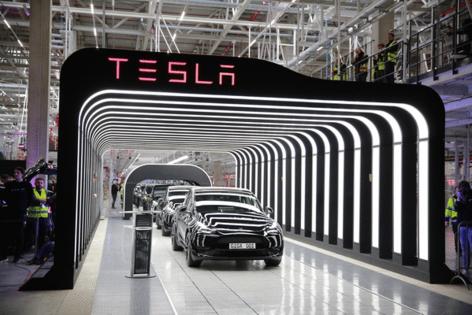Tesla's $25,000 car means tossing out the 100-year-old assembly line
Published in Automotive News
Tesla Inc. has a plan to fend off cheaper competition from China with a $25,000 electric car. But first it has to overhaul a 100-year-old manufacturing process pioneered by Henry Ford.
The company is moving to what it calls an “unboxed” approach, which is more like building Legos than a traditional production line. Instead of a large, rectangular car moving along a linear conveyer belt, parts are assembled simultaneously in dedicated areas and then all put together at the end. Tesla says the change could reduce manufacturing footprints by more than 40%, allowing the carmaker to build future plants far faster and at less expense.
If the new assembly process is successful, Tesla says it can slash production costs in half. That will be key to delivering a cheap enough car to stoke demand that’s slowed of late and pressured the electric-car maker’s stock price. Tesla shares are down 28% so far this year, compared to a 10% increase in the S&P 500 during the same period.
“If we’re going to scale the way we want to do, we have to rethink manufacturing again,” Lars Moravy, Tesla’s vice president of vehicle engineering, said during the company’s March 2023 investor day.
The problem is that investors haven’t heard many details about how Tesla has progressed since then, even as Chinese automakers have slashed costs and Detroit carmakers have refocused their efforts on cheaper models, as well.
On the company’s most recent earnings call in January, Chief Executive Officer Elon Musk stuck to generalities, saying only that Tesla was “very far along” on making a cheaper car, which is slated to start production at the end of next year. While he mentioned the new “revolutionary manufacturing system,” calling it “far more advanced than any automotive manufacturing system in the world, by a significant margin,” he didn’t elaborate.
Musk is notorious for missing deadlines, and some on Wall Street are dubious that Musk can meet his already-delayed timeline — he first teased a $25,000 EV way back in 2020 — much less the savings targets. Tesla’s method is unproven, and may come with its own inefficiencies and risks. A recent analysis by Bloomberg Intelligence estimated that the new modular manufacturing process would cut costs by 33% — not half.
Tesla didn’t respond to requests for comment.
In the absence of details, some people are taking it upon themselves to figure out how well the system might work. Mathew Vachaparampil, CEO of Caresoft, an engineering and automotive benchmarking firm, said his company’s engineers spent 200,000 hours building a digital replica of Tesla’s unboxed platform. They found that Musk’s ambitions are technically possible, and Vachaparampil said they would make “huge financial sense” — if achieved.
Ford’s legacy
...continued
©2024 Bloomberg L.P. Visit bloomberg.com. Distributed by Tribune Content Agency, LLC.







Comments